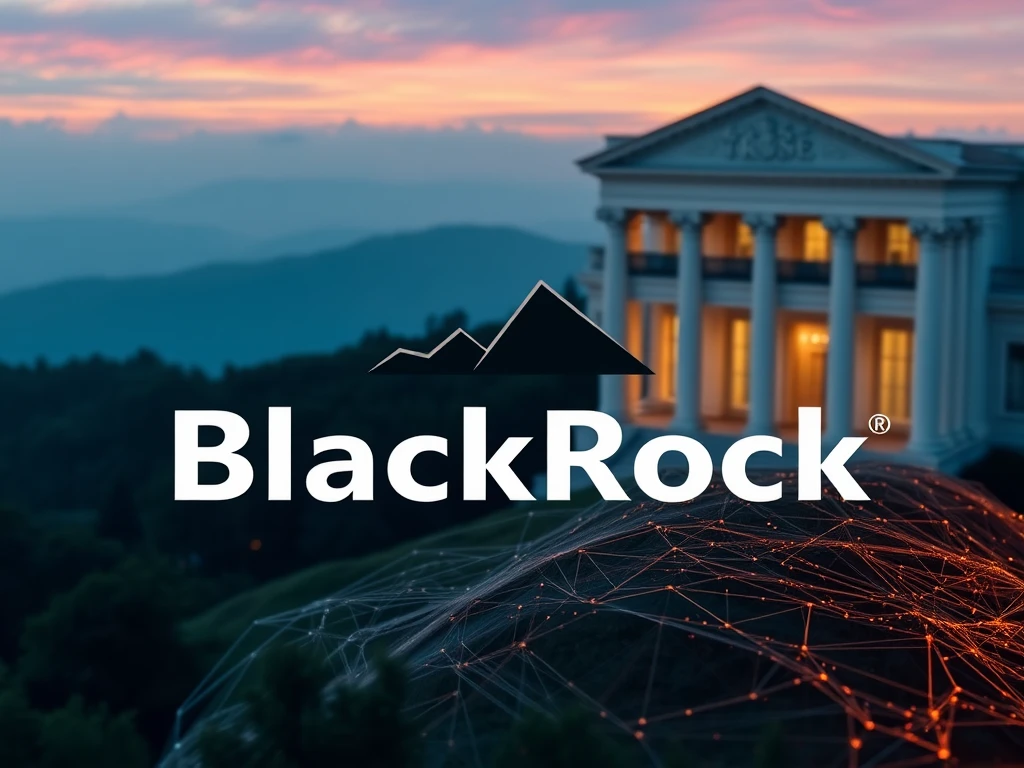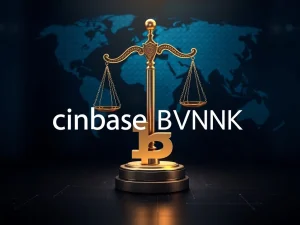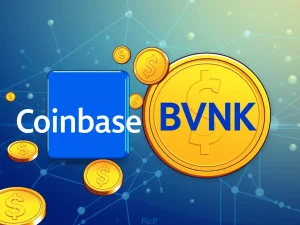BlackRock Files for Revolutionary Digital Shares Tracking Money Market Fund

Asset management giant BlackRock is taking another significant step into the digital asset space. Following the success of its BUIDL tokenized fund, the firm has filed to create `BlackRock digital shares` for one of its existing money market funds, signaling a deepening commitment to leveraging innovative technology in traditional finance.
What Does the BlackRock Filing Mean for `Money Market Fund Tokenization`?
BlackRock recently submitted a Form N-1A filing with the U.S. Securities and Exchange Commission (SEC) on April 29. This filing outlines a plan to introduce digital ledger technology (DLT) shares for its BLF Treasury Trust Fund (TTTXX). This fund currently holds over $150 million in assets, primarily invested in U.S. Treasury bills and cash.
Key details from the filing include:
- The DLT shares will track the existing TTTXX money market fund.
- Purchase and holding of these shares are expected to be facilitated through The Bank of New York Mellon (BNY Mellon).
- BNY Mellon intends to utilize blockchain technology to maintain a mirror record of share ownership for its customers.
This move represents an exploration of how digital ledgers can enhance the transparency and record-keeping for traditional financial products like money market funds.
How is `Blockchain Technology Finance` Being Used Here?
Unlike BlackRock’s BUIDL fund, which is a tokenized fund itself, the DLT shares for TTTXX are described differently. The filing indicates that these shares will not be tokenized in the same way as BUIDL. Instead, the blockchain technology will serve as a tool for transparency and verification.
BlackRock states that the blockchain will maintain a “mirror record” of share ownership. This means that while a digital record exists on a distributed ledger, the traditional book-entry records maintained by BlackRock will remain the official ledger for ownership. This approach appears to be a step towards integrating blockchain benefits without fully replacing existing infrastructure or creating a freely transferable token like BUIDL.
The filing did not specify a proposed ticker symbol or a management fee for these DLT shares. It also noted a minimum initial investment requirement of $3 million for institutions interested in purchasing these digital shares.
BlackRock and Fidelity: A Trend in `Treasury Tokenization`?
BlackRock’s filing follows a similar move by another Wall Street heavyweight, Fidelity. On March 21, Fidelity filed to list an Ethereum-based OnChain share class for its Fidelity Treasury Digital Fund (FYHXX). This fund, like BlackRock’s TTTXX, is an `money market fund tokenization` effort focused on U.S. Treasury bills and holds around $80 million in assets.
While Fidelity’s OnChain share class filing is pending regulatory approval and expected to take effect in late May, both filings highlight a growing interest among major asset managers in leveraging blockchain technology for traditional assets, particularly Treasury bills.
The Growing Landscape of `RWA Tokenization`
The filings by BlackRock and Fidelity are part of a larger trend in `RWA tokenization` (Real-World Asset tokenization). Asset managers are increasingly exploring the use of blockchain to represent ownership of assets like Treasury bills, bonds, and private credit on digital ledgers.
According to data from rwa.xyz, the treasury tokenization market is currently valued at approximately $6.16 billion. BlackRock’s BUIDL fund is a significant player in this market, leading with around $2.55 billion in assets. Another notable project is the Franklin OnChain U.S. Government Money Fund (BENJI), issued by Franklin Templeton, which holds over $700 million in real-world assets.
Ethereum has emerged as the preferred blockchain for tokenizing treasury assets, hosting over $4.55 billion of the total market value. Other networks like Stellar and Solana also host significant amounts, rounding out the top three chains for this type of activity.
The potential of RWA tokenization has been championed by figures like BlackRock CEO Larry Fink, who has publicly stated his belief that this technology could bring about a revolution in investing by increasing efficiency, transparency, and accessibility.
In conclusion, BlackRock’s filing for digital shares tracking a money market fund, alongside similar moves by peers like Fidelity, underscores the increasing adoption and exploration of `blockchain technology finance` within traditional financial institutions. While this specific filing uses blockchain for a mirror record rather than full tokenization, it represents another step in the broader evolution towards `RWA tokenization` and could pave the way for future digital asset innovations in the financial sector.







